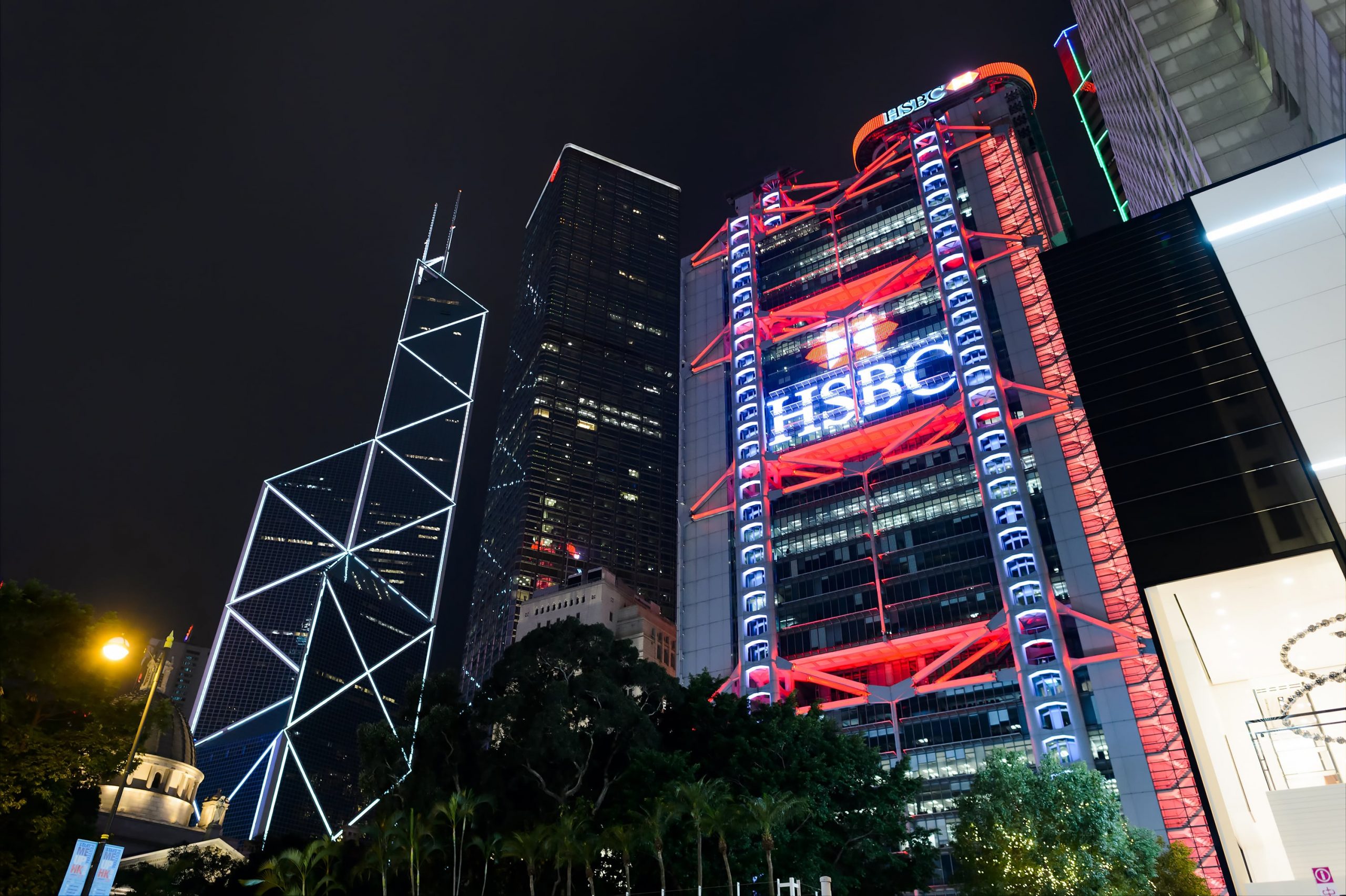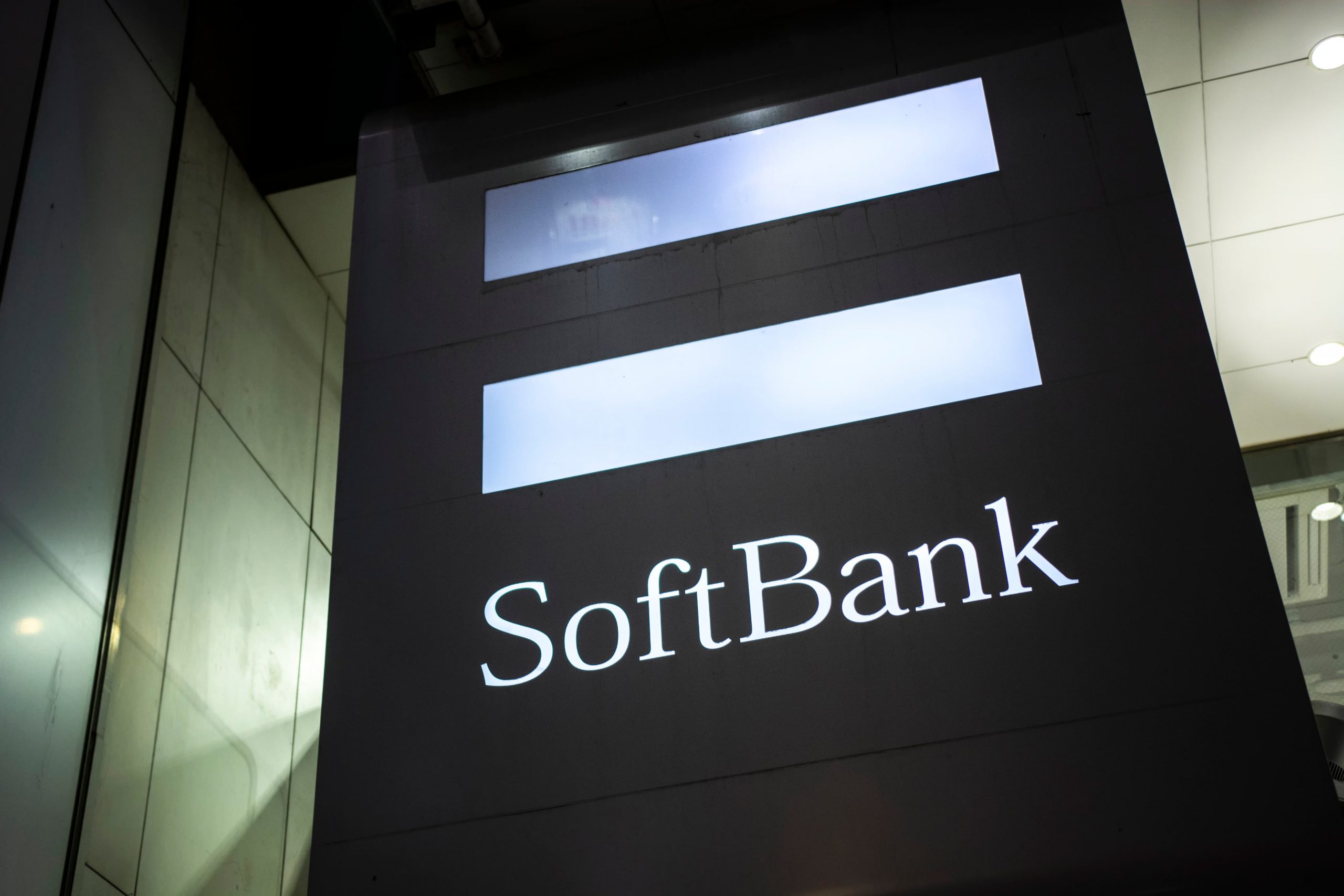This site uses cookies to provide you with a great user experience. By using BondbloX, you accept our use of cookies.
Bond Market News
Jiayuan Launches $ Bond; Oman Raises $3.25bn via Bonds; CFLD Downgraded by Fitch, Bonds Recover; CNOOC & Xiaomi Blacklisted; Sritex $ Bonds Slump
January 15, 2021


US equities ended slightly lower as S&P and Nasdaq were down 0.4% and 0.1% respectively. Fed Chair Powell said that “a lesson from the financial crisis a decade ago is not to exit a bond-buying program too early…interest rate increase would come no time soon” – reinforcing the asymmetric inflation policy and the need for a big stimulus package as US 10Y Treasury yields moved 6bp higher intraday. US initial jobless claims for the prior week printed at 1.15mn, rising by 181k, the most since March 2020 when the pandemic effects hit the economy. “The restrictions imposed to combat the third Covid wave clearly have done great damage…Claims will drift sideways, more or less, over the next two to three months, before restrictions on the services sector can be gradually eased as vaccination brings herd immunity into sight”, said Ian Shepherdson, chief economist at Pantheon Macroeconomics. US IG CDS spreads were 0.2bp wider and HY was 0.1bp wider. EU main and crossover CDS spreads also widened 0.2bp and 0.8bp respectively. Asia ex-Japan CDS spreads tightened 1.3bp and Asian equities opened mixed today.
Bond Traders’ Masterclass – Avail 30% on a Bundle Ticket of 5 Sessions
4 Days To Go
BondEvalue is conducting a Bond Traders’ Masterclass across five sessions specially curated for private bond investors and wealth managers to develop a strong fundamental understanding of bonds. The sessions will be conducted by debt capital market bankers who have previously worked at premier global banks such as Credit Suisse, Citi and Standard Chartered. Click on the image below to register.
New Bond Issues
- Jiayuan International $ 2.5Y at 13.85% area alongside tender offer; books over $700mn
- Shandong Guohui Investment $ 5Y at 3.5% area
- Wuhan Dangdai Science & Tech $ 364-day at 9.75% area
- Rudong County Jinxin Transportation capped $150mn 3Y credit enchanced bond at 3.1% area

Wheelock raised $500mn via a 5Y bond at a yield of 2.379%, or T+190bp, 40bp inside initial guidance of T+230bp area. The bonds were unrated and received orders over $2.2bn, 4.4x issue size. Wheelock owns Hong Kong property developer Wheelock Properties, as well as a 54.37% stake in The Wharf (Holdings), a property investor and developer in Hong Kong and mainland China, and a 46.99% stake in property investment company Wharf Real Estate Investment.
BOC Aviation raised $400mn via a 5Y bond at a yield of 1.984%, or T+150bp, 30bp inside initial guidance of T+180bp area. The bonds have expected ratings of A-/A- at par with the issuer, and received orders over $1.3bn, 3.25x issue size. The bonds will be issued off a $15bn global medium term note (MTN) programme. Proceeds will be used for new capital expenditure, general corporate purposes and/or refinancing of borrowings. The new bonds were priced 0.6bp inside its older 3.875% bonds due April 2026.
China Aoyuan raised $188mn via a 364-day note at a yield of 4.2%. The bonds were unrated and proceeds will be used for offshore debt refinancing.
Sunkwan Properties raised $185mn via a 364-day note at a yield of 13.5%, unchanged from price guidance. Proceeds from the unrated bonds will be used for the development and acquisition of property projects and for working capital and general corporate purposes.
Longjitaihe Property raised $100mn via a 364-day note at a yield of 12.5%, 40bp inside initial guidance of 12.9 % area. TaiChen Development (BVI) is the issuer and Longjitaihe Property is the parent guarantor. Proceeds from the unrated issue will be used for onshore debt refinancing.
Zhuhai Huafa raised $150mn via a tap of their 2.8% 2025s at a yield of 3.1%, 40bp inside initial guidance of 3.5% area. The bonds have expected ratings of BBB and received orders over $800mn, ~5.3x issue size. The tap brings the total amount outstanding to $400mn. Proceeds will be used to replenish working capital for offshore business operations. The tapped bonds trade at a new issue premium of 7bp over their initially issued 2.8% 2025s which currently yield 3.03%.
Guangxi Investment Group raised $100mn via a tap of their 3.6% 2023s tap at a yield of 4.7%. Wholly owned subsidiary Guangxi Financial Investment Group, rated Ba1, is the issuer and Guangxi Investment Group is the guarantor. The bonds have expected ratings of Baa2/BBB. Proceeds from the tap will be used for offshore debt refinancing. The bonds were priced at a new issue premium of 20bp over their initial 3.6% 2023s which were yielding 4.5%.
Nanjing Luhe raised $97mn via a 364-day credit-enhanced note at a yield of 2.75%, unchanged from price guidance. Longchuang Group is the issuer and Hong Kong Liuteng International is the guarantor. Nanjing Luhe Economic and Technological Development Corp is providing keepwell and liquidity support as well as a deed of equity interest purchase undertaking. Bank of Jiangsu Nanjing branch is providing a standby letter of credit. Proceeds will be used for general corporate purposes.
New Bond Pipeline
- Shandong Guohui Investment $ bond
- SK Battery America $ two-tranche green bond
- Dubai Aerospace Enterprise $ bond
- Zurich Insurance $ 30.25NC10.25
- Sritex $ Yankee bond
- PFC $ bond
- REC $ bond
- Indonesia Infrastructure Finance $ 3Y or 5Y sustainability bond
Rating Changes
- Moody’s upgrades Enel to Baa1; stable outlook
- Fitch Downgrades China Fortune Land to ‘B’ from ‘BB-‘, Places Ratings on Watch Negative
- Fitch Downgrades Rockies Express Pipeline LLC’s Ratings; Placed on Negative Watch
- Fitch Affirms Unicaja and Places Liberbank on RWP on Merger Announcement
- China Everbright Bank Co. Ltd. Assigned ‘BBB+/A-2’ Ratings By S&P; Outlook Stable
- Zhongsheng Group Assigned ‘BBB-‘ Rating By S&P On Solid Market Leadership; Outlook Stable
- Fitch Affirms and Withdraws Simon Property Group’s Ratings; Outlook Negative
2020 Bond Market Round Up – Rest of Asia
In today’s bond market round-up of 2020, we cover the best and worst performing bonds and largest deals from issuers from Rest of Asia – APAC excluding Singapore, Hong Kong, China and India, which were covered earlier in the week. All the big four Aussie lenders, ANZ, Westpac, CBA and NAB, made it to the best performers list with ANZ’s EUR 1.125% 2029s leading the pack, returning over 20% to investors ex-coupon. The list also included sovereign bonds from South Korea, Malaysia and Indonesia, mining companies Rio Tinto and Glencore, and iPhone assembler Foxconn.
Among the worst performers, island nation Sri Lanka dominated the list with its dollar sovereign bonds losing 30-40% of its value during the year on the back of increased government spending due to the pandemic and shrinking forex reserves. Carrier SriLankan Airlines‘ 7% 2024s topped the list, falling over 40% in 2020. Another state-owned distressed carrier, Indonesia’s Garuda saw its 5.95% sukuk due 2023 fall 22% on the back of travel restrictions. Junk rated sovereigns Maldives, Laos and Mongolia and Indonesian corporates PB International, Soechi, MNC Investama and SSMS also made the list.

Among the largest deals from the rest of Asia, Japanese issuers led the pack – Mitsubishi UFJ Financial Group (MUFG), Takeda, Sumitomo, JBIC and Nomura featured among the largest issuers last year. Sovereigns Indonesia, and Philippines and Aussie lenders Westpac, NAB and CBA also made the list. In terms of returns since issuance, while most bonds gave a moderate profit with mid-single digit returns, Indonesia’s sovereign bonds due 2030 and 2050 returned 16-20% to investors ex-coupon.
In case you missed it, we summarized the bond market in terms of best/worst performing bonds, largest deals and issuance volume for global and Asian dollar bonds in 2020. You can read the full report via the button below:
Oman Raises $3.25 Billion via Three Trancher
Gulf sovereign Oman raised $3.25bn via a three-trancher, launched and priced during US hours on Thursday. It raised:
- $500mn tap of Oman’s 4.875% 2025s at a yield of 4.45%, 42.5bp inside initial guidance of 4.875% area
- $1.75bn via a 10Y bond at a yield of 6.25%, 37.5bp inside initial guidance of 6.625% area
- $1bn via a 30Y bond at a yield of 7.25%, 50bp inside the wide end of initial guidance of 7.625-7.75%
While the new 10Y and 30Y bonds are unrated, the 2025s are rated Ba3/BB- in line with the issuer. Oman paid a new issue premium of 14bp on the tap of its 4.875% 2025s. With the new 30Y bond, the GCC member nation extended its dollar bond curve to 2051. Oman is also raising funds from banks, as per Reuters, looking to raise $1bn that could be upsized to $2bn from a group of banks. Oman has an external debt of $10.7bn, ~7.5% of its GDP, maturing in 2021 and 2022, as per S&P. S&P expects a budget deficit of OMR 2.24bn ($5.83bn) this year, of which OMR 1.6bn ($4.16bn) would be funded by debt and the remaining OMR 600mn ($1.56bn) from its reserves. Oman last tapped the bond markets in October 2020 with 6.75% bonds due 2027, which are currently trading at 108 yielding 5.32%, and 7.375% bonds due 2032, which are currently trading at 109.12 yielding 6.27% on the secondary markets.
For the full story, click here
CFLD Downgraded Two Notches By Fitch Following a Similar Move by Moody’s
Post the Moody’s downgrade of China Fortune Land Development (CFLD) by two notches to B2 on Wednesday, Fitch also followed with a two notch downgrade to B from BB- on Thursday. Similar to Moody’s, Fitch highlighted increased refinancing risk and mentioned the price slump of its bonds on the delay in the announcement of its cooperation agreement extension with Ping An Life. Besides that, weaker operational performance in 2H2020 also was a reason for the downgrade. Apart from Ping An Life’s CNY18bn ($2.8bn) investment for 25% equity in CFLD, Ping An Life’s sister companies have provided additional debt funding to CFLD. In Fitch’s view, further investments from Ping An Life may attract regulatory scrutiny as the insurer is subject to insurance regulations, which include strict rules on property-related investments. The developer has a $530mn 8.625% bond maturing on February 28.
CFLD and select developers’ bonds like Greenland Holdings have been falling since the new year began. Yesterday though, both companies’ bonds were among the top gainers. CFLD’s 8.75% 2022s were up 8.9% to 61.3, 9% 2021s up 8.4% to 72.3 while Greenland’s 5.875% 2024s and 7.25% 2025s were up 6.2% and 5.2% to 87.5 and 88.5 respectively.
For the full story, click here
Xiaomi & CNOOC Added to the Blacklist by US
In days before the change of guard, the US Department of Commerce revealed through a press release on Thursday that it had added Chinese National Offshore Oil Corporation (CNOOC) to the Entity List and Chinese company Skyrizon to the Military End-User (MEU) List. According to the Commerce department, the two companies pose a threat to US security as CNOOC has assisted China in intimidating its neighbors in the South China Sea and Skyrizon has the capability to develop, produce, or maintain military items, such as military aircraft engines. Commerce Secretary Wilbur Ross said that “CNOOC acts as a bully for the People’s Liberation Army to intimidate China’s neighbors,” The Entity List lays restrictions on exports of items subject to the Export Administration Regulations (EAR) to persons believed to be a significant risk of becoming involved in activities that can impact the US national security or foreign policy interests. The MEU List requires an additional license for export of designated items to listed entities.
Meanwhile, DoD also extended its list of “Communist Chinese military companies” operating directly or indirectly in the United States. The tranche 5 of the list issued by DoD had 9 Chinese companies including Xiaomi Corporation. The release said, “The Department is determined to highlight and counter the People’s Republic of China’s (PRC) Military-Civil Fusion development strategy… by ensuring its access to advanced technologies and expertise acquired and developed by even those PRC companies, universities, and research programs that appear to be civilian entities.
CNOOCs longer dated bonds were in the red. Its 4.875% 2044s and 3.3% 2049s were down 0.53 and 0.22 points respectively to trade at 116.82 and 92.09. CNOOCs bonds have seen a downside after an executive order was signed by President Donald Trump in November banning Americans from investing in companies on the US blacklist. The 4.875% 2044s and 3.3% 2049s were trading at 136.03 and 109.74 respectively on November 20 and have seen a 15% drop since then
For the press release by US Department of Commerce, click here and by DoD, click here
Mexico Raises €1.8 Billion via Euro Denominated 12Y and 30Y Bonds
Mexico raised €1.8bn ($2.2bn) via a dual trancher. It raised €1bn ($1.21bn) via a 12Y bond at a yield of 1.676%, or Mid-Swaps + 180bp, 30bp inside initial guidance of T+210bp area. It also raised €800mn ($971mn) via a 30Y bond at a yield of 2.464%, or MS+245bp, 25bp inside initial guidance of MS+270bp area. The bonds have expected ratings of Baa1/BBB/BBB- and received combined orders over €7bn ($8.5bn), ~3.9x issue size. Proceeds will be used for general sovereign financing purposes, to retire outstanding debt of Mexico in accordance with a tender offer and for the redemption of its EUR 2023 bonds in part or whole.
For the full story, click here
Europcar CDS Holders Squeezed With No Payout
French car rental company Europcar, which defaulted on its debt, as part of a financial restructuring at the end of last year, saw its Credit Default Swaps (CDS) also end up worthless due to a technical quirk. A CDS is a contract structured such that the buyer of the CDS pays a regular premium and stands to gain a significant sum of money from the seller if the issuer defaults on the instrument underlying the CDS. Banks like JPMorgan, Deutsche Bank hold auctions to determine the payout to buyers based on the expected loss on the underlying bonds.
While this should have been the case for holders of Europcar’s CDS, the terms of Europcar’s restructuring restricted holders of €1bn of its bonds from trading – this meant that the debt was not included in determining the CDS payout to the buyers. During the first round of auctions, Europcar’s bonds were valued at 73 cents on the euro, ideally resulting in a 27% (100%-73%) payout to the CDS buyers. But the restricted supply of tradable debt meant that there were hardly any sellers and only buyers which meant that the CDS would be worthless (100%-100%). While there was still more than enough debt outstanding to settle the CDS, not enough bondholders ultimately sold their bonds into the auction. “This is a textbook short-squeeze” said Jochen Felsenheimer, a managing director at XAIA Investment. Investors/traders who bet last year that the CDS would lead to huge payouts stand to lose out despite getting the call right on the company defaulting. Europcar’s 4.125% 2024s were up 0.4 to 76.48, yielding 11.92% in secondary markets.
For the full story, click here
Sritex’s Dollar 2024s & 2025s Fall Over 12% Ahead of New Bond Issue
Leading Indonesian garment company Sritex saw its bonds among the top losers on Thursday with their 6.875% 2024s down 12.4% to 81.25 and 7.25% 2025s down 13.6% to 81.34. Moody’s had assigned a B1 rating to Sritex’s proposed senior unsecured bonds with a negative rating outlook. Sritex plans to use the proceeds to refinance a $150mn revolver debt (Term of the day, explained below) tranche of its $350mn syndicated loan facility maturing January 2022. The remainder will be used to repay short-term working capital debt. The rating agency expects the transaction to be leverage neutral. “The proposed bond issuance will improve Sritex’s liquidity by lengthening its debt maturity profile and freeing up availability under its revolver tranche and working capital lines, which can then be used to support working capital and other operational requirements,” said Moody’s analyst Stephanie Cheong. Sritex had $159mn in cash and $87mn in credit lines vs. debt of ~$611mn due in the next 12-18 months. Sritex in November 2020, had raised a consent solicitation to extend the maturity of its $350mn syndicated loan facility by two years to January 2024. Sritex’s lenders have until February 2, 2021 to respond. There is no minimum acceptance amount and lenders unwilling to extend will need to be repaid by the original January 2022 maturity date. The negative outlook by Moody’s reflects the increasing refinancing risks associated with Sritex’s $350mn syndicated loan maturing January 2022 amid difficult market conditions.

For the full story, click here
Term of the Day
Revolver Debt
Revolver/revolving debt is a form of borrowing where the credit line has a maximum limit but the borrower can access it in any quantum based on their funding needs. In a normal borrowing, once the loan has been repaid, the borrower must take a new loan to borrow more. In revolving debt, the borrower can re-access any funds that have been paid back too. Revolving debt generally comes with a higher interest rate and does not necessarily have a fixed coupon. Sritex, in today’s example, has revolving debt worth $150mn as part of a $350mn syndicated loan facility.
Talking Heads
On ECB not needing extra stimulus to fight pandemic
Bas van Geffen, economist at Rabobank
“The ECB will bank on its December recalibration, reiterating that it was enough,” said van Geffen. “At the same time, the ECB will repeat its commitment to adjust its policy settings again if new developments were to require this.”
Lauri Halikka, SEB strategist
“The ECB is likely to be comfortable with the current policy mix for now,” he said. “Financial conditions have remained very favorable during the past months and the ECB now concentrates on providing cheap, long-term liquidity to banks to support private spending.”
On the recommendation to buy Chinese property junk bonds following recent sell-off – Kenneth Ho and Chakki Ting, Goldman Sachs analysts
“We think investors should take advantage of the recent weakness in the China Property HY sector and buy the dip,” the analysts wrote. “We do not consider the recent tightening of policies toward the China property sector to be a reason to avoid the sector, as we expect policy tightening to be handled pragmatically to avoid a broad-based credit crunch.”
When President-elect Joe Biden takes office next week, this“should translate into a greater fiscal impulse than under our previous divided government baseline,” the strategists said.
“Presently, the overwhelming judgment of market forecasters is that interest rates will rise throughout 2021 owing to the expectation that additional fiscal stimulus coupled with an easy monetary policy will create an inflationary cocktail as pandemic related shutdowns lessen,” Hoisington said. “The primary determinate of the yield on long dated U.S. government debt,” allowing the bull run in long-maturity Treasuries to continue, the firm said.
”Seems like this was already priced in at least as far as magnitude,” said Spivak. “The main question is how much of it gets compromised away to get it passed. That is probably the next layer of speculative uncertainty that markets are focused on. Hence the muted response.”
Top Gainers & Losers – 15-Jan-21*

Other Stories
Go back to Latest bond Market News
Related Posts:









